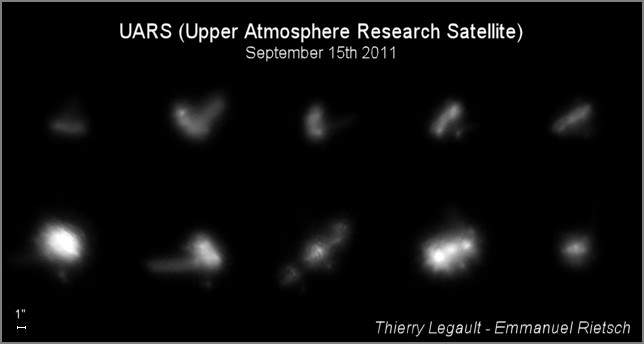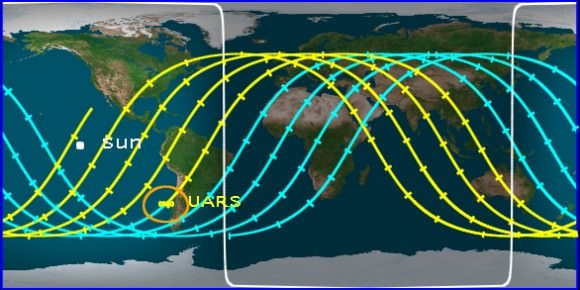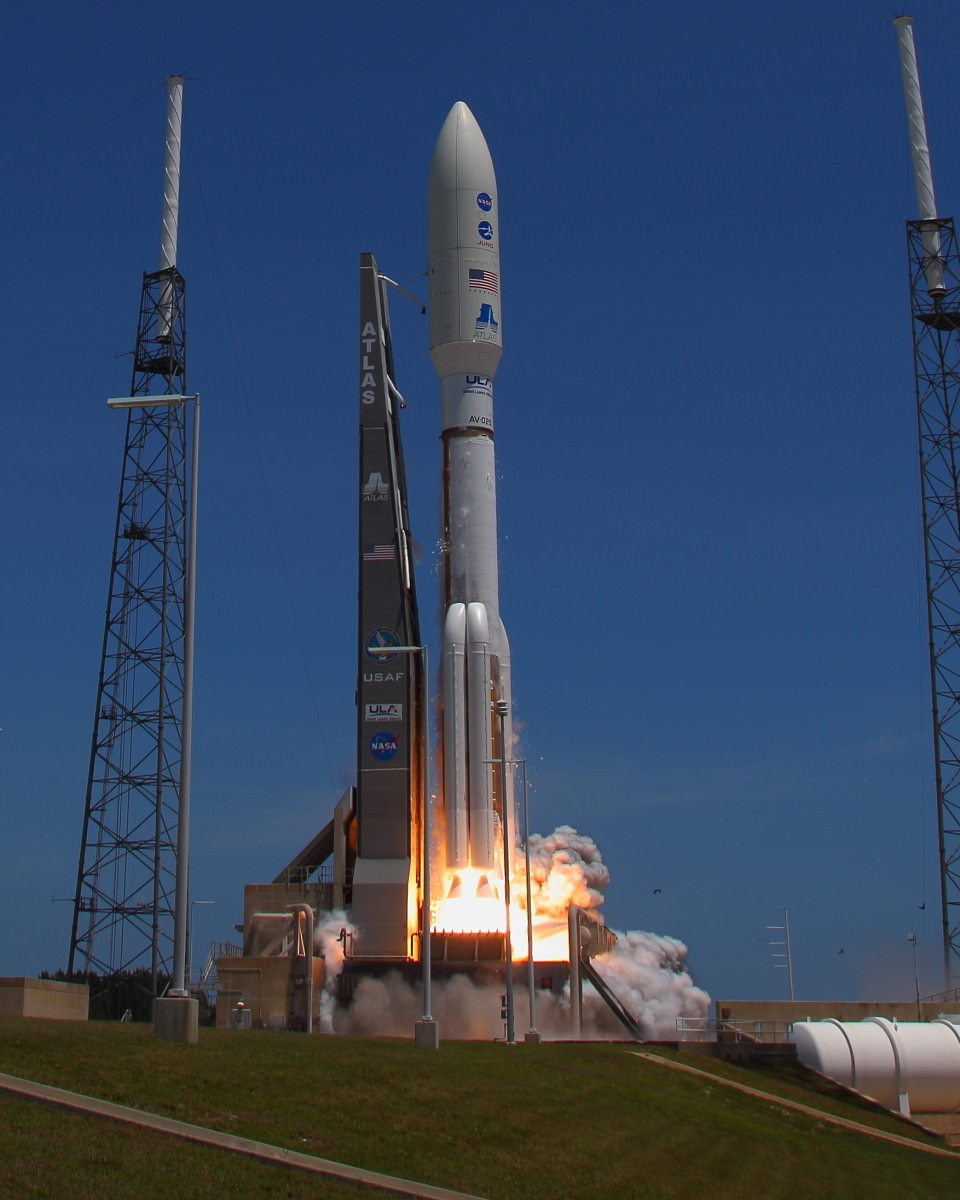Here’s a great talk given by our friend Phil Plait at a TED event, TEDxBoulder, about how an asteroid might one day give us Earthlings a really bad day. But he’s got good news, too: We have a space program!
Stunning Timelapse Video of Earth and Sky, Volume 2
Almost a year ago we featured a timelapse video by videographer Dustin Farrell that showed the beauty of our Earth and sky. He’s now completed a second video which is just absolutely beautiful. Of particular interest to Universe Today readers is how Farrell was able to capture the stunning shimmering of stars at night and he even got several long-trailing meteors to make a cameo. Farrell says every frame of this video is a raw still from a Canon 5D2 DSLR and processed with Adobe software. “In Volume 2 I again show off my beautiful home state of Arizona and I also made several trips to Utah,” he writes on his Vimeo page. “This video has some iconic landmarks that we have seen before. I felt that showing them again with motion controlled HDR and/or night timelapse would be a new way to see old landmarks.”
Just gorgeous. Watching in HD with a big screen is recommended. Farrell adds that part 3 may be on the way. (Yay!)
Timelapse: Aurora Borealis in Finnish Lapland
This timelapse is a selection of northern lights filmed by Flatlight Films during the winter of 2011 in several locations in the Finnish Lapland. Sit back and enjoy from the warmth of your home or office!
Take a 3-D Tour of the International Space Station
ESA astronaut Paolo Nespoli shot some 3-D video during his 6 months on board the International Space Station (Dec 2010 to May 2011) and the footage has now been put together into a “tour” of the space station. Nespoli and the crew used ESA’s Erasmus Recording Binocular (ERB-2) stereoscopic camera, capturing “day-in-the-life” activiites on the ISS, from educational activities, to scientific experiments and physical training, also demonstrating the way astronauts move in weightlessness through the various modules. So, grab your red/blue 3-D glasses to watch the video.
ERB-2 was used on August 6, 2011 by astronaut Ron Garan to broadcast live 3-D video from space.
The ERB-2 is the about the size of a shoebox, with high-definition optics and advanced electronics.
Must See Video: Falling NASA UARS Satellite Observed While Still in Orbit

The huge Upper Atmosphere Research Satellite (UARS) will be plummeting to Earth in an uncontrolled re-entry this week, but here’s an incredible video from astrophotographer extraordinaire Thierry Legault who shot footage of UARS with his 14-inch telescope. Legault was in Northern France (Dunkerque) last week to attempt to capture views of the satellite, and had success on September 15, 2011 between 04:42:14 and 04:44:02 UTC, just 8-9 days before its atmospheric reentry, when it was at an altitude of only 250 km. The tumbling, uncontrolled nature of the satellite is obvious in this video, and various components are visible, such as the body itself and the solar arrays.
NASA has now refined its prediction for when this bus-sized satellite will fall to Earth. The 20-year-old defunct satellite now has a predicted re-entry Time of about 20:36 UTC on September 23, 2011, plus or minus 20 hours, according the the UARS Reentry Twitter feed. So, heads up!
[/caption]
This is a day earlier than previously anticipated. Pieces of the 6.5-ton satellite are expected to survive the fiery plunge and hit our planet, but NASA does not know exactly where. There was word today that increased activity from the Sun has hastened the decay of the satellite’s orbit.
Legault said his images show the satellite at a 316 km distance to the observer. The angular speed at culmination: 1.36°/s. The speed of the sequence is accelerated two times with regard to real time (20 fps vs 10 fps). The satellite is tumbling, perhaps because of a collision with satellite debris a few years ago.
Here is the equipment Legault used: Celestron EdgeHD 14” Schmidt-Cassegrain telescope (at a focal length of 8500mm) on automatic tracking system, as described on this page. Camera: Lumenera Skynyx L2-2.
Thanks to Legault for sharing his video and images with Universe Today! See more info at Legault’s website.

NASA says there are about 26 components that are big enough to survive and make it down to Earth, the largest weighing more than 150 kg (330 pounds.)
What are you chances of getting hit by debris? Nick Johnson, chief scientist with NASA’s Orbital Debris Program, said that numerically, it comes out to a chance of 1 in 3,200 that any one person anywhere in the world might be struck by a piece of debris. That might sound high, but if you factor in that there are 7 billion people on Earth and that a large part of Earth is covered by water, the liklihood is actually very small. The chance that any one person on Earth getting hit by debris has been estimated at about 1 in 21 trillion.
We’ll provide more updates on the UARS story. For those who would like to catch a last glimpse of UARS streaking across the night sky for yourself should check Heaven’s Above or SpaceWeather’s Satellite Tracker for flyby times in your area.
For more information about this satellite’s uncontrolled re-entry, see our earlier article detailing UARS.
Stunning New Timelapse: Tempest Milky Way
It’s been a summer of storms across the US, and timelapse photographer Randy Halverson has taken advantage of it! Randy alerted us that he’s just put out a new video following his incredible Plains Milky Way timelapse from earlier this year. His new one is “Tempest Milky Way” which features the storms and skies of the Midwest US. Randy said he wanted to combine “good storm and star shots,” but that the opportunity doesn’t come along very often. “The storm has to be moving the right speed and the lightning can overexpose the long exposures.” But Randy’s photography and editing prowess shines in “Tempest Milky Way.”
A few things to watch: Look for a Whitetail buck (briefly) at the 1:57 mark (“It was caught on 20 frames, and was there for about 10 minutes. It was only 50 yards from the camera, dolly and light,” Randy said.)
At about 2:28 an airplane flies under the oncoming storm.
At the 3:24 mark, a meteor reflects on the water of the small lake. Look for many other meteors in the timelapse, too.
This is a wonderful video, augmented with great music, not to be missed!
See more at Randy’s website DakotaLapse
Nifty Video: Clouds in Motion on Mars
Kick back and watch the clouds go by — on Mars! Emily Lakdawalla at the Planetary Society Blog has put together a very nifty video from Mars Express data, showing clouds in motion over Mars. Emily has just learned a new technique called ‘tweening’ to create smooth animation videos from a series of images that are not at a very high frame rate. She explains more about the technique on her blog post here and has promised a two-part “how to” explainer for those interested in learning how to do this for yourself.
The cloudy area shown on Mars is within Noachis Terra to the west of Hellas basin, around 45 degrees south, 38 east.
In Their Own Words: Experts Talk Juno
CAPE CANAVERAL Fla. – Many experts took time out of their hectic schedules to talk with Universe Today in the day leading up to the launch of the Juno spacecraft. Some even took the time to talk to us just minutes before the probe was scheduled to be launched on its mission. Check out what they had to say below:
Juno Project Scientist Steve Levin was at Kennedy Space Center to watch the Juno probe begin its five-year journey to Jupiter. He took a few minutes of his time to talk about what his expectations are for this mission.
Levin has been with JPL since 1990, one of the previous projects he worked on is the Planck mission which launched in 2009.
Levin believes that Juno could fundamentally change the way we view Jupiter. He was one of many VIPs that descended on Kennedy Space Center to watch as Juno thundered to orbit atop at Atlas V rocket.
Sami Asmar is part of the science team that is working on the Juno project. He was at the rollout of the Atlas rocket to the pad. Here is what he had to say about the mission (note the Atlas rocket moving out behind him).
Bill Nye the Science Guy was a very busy man while at Kennedy Space Center. He still took the time to chat with Universe Today about his views on this mission. Unfortunately, with little time to spare, we had to conduct the interview within minutes of the first launch attempt. A good chunk of Nye’s interview – was drowned out by the lead up to the countdown!
The usual launch of an Atlas consists of the launch team coming in, pushing a button and going home – the launch vehicle is that reliable. This day, things occurred quite differently. A technical issue coupled with a wayward boat that had drifted too close to the launch pad saw the launch time slip from 11:34 a.m. EDT to 12:25 p.m. When the rocket did take off however it was a spectacular sight to behold, faster than other iterations of the Atlas, it roared off the pad, sending Juno on its way to Jupiter.
30-Year-Old 3-D Movie Made from Viking Data Gets New Life
Back in 1979, scientists at Stanford University created a 3-D movie from images sent back by the Viking landers on Mars. It was rather novel in that, while 3-D movies had been around since the 1950’s — mostly for low-budget B movies in theaters — this stereographic film was more scientific in nature, but was created for the public to learn more about the Viking mission and Mars, providing a “you are there” experience. It was created using 16mm film, which degrades over time. Considering the unique historical and scientific value of this film, a group from NASA’s Ames Research Center have constructed a new remastered digital version, made from the original 16mm film footage, sound reels, and related documentation.
Plans are underway to hold screenings of this new version of Mars in 3-D in Digital Cinema 3-D format. But in the meantime you can watch it now online in a digital anaglyph version, best viewed with red-cyan 3-D glasses.
Read more about the remastering process and read original papers from the imaging team from Viking at the Ames History Office website.
Ride Along with a Sounding Rocket
Earlier this year, a sounding rocket was launched to measure solar energy output and calibrate the EVE instrument on the Solar Dynamics Observatory. Two on-board cameras recorded the rocket’s journey, allowing the rest of us to tag along from Earth to space and back again. Make sure you listen to all the sounds as well as enjoy the views.
Video courtesy Goddard Space Flight Center.

